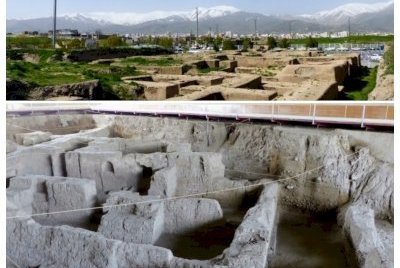Iran
Hegmataneh
Hegmataneh or Ecbatana comprises the ruins of a city of the civilization of the Medes.
Later, it became the (summer) capital ofthe Achaemenids and Parthians as well. Excavations so far have been limited, but have revealed a massive defensive wall made of mud-bricks and a checkerboard urban plan.
Community Perspective: Solivagant has deep-dived into its history.
Site Info
Official Information
- Full Name
- Hegmataneh (ID: 1716)
- Country
- Iran
- Status
-
Inscribed 2024
Site history
History of Hegmataneh
- 2024: Advisory Body overruled
- From Deferral to Inscribe, after letting go of Historical Centre of Hamedan part of the nomination (amendment by Qatar).
- 2024: Inscribed
- Inscribed
- Type
- Cultural
- Criteria
- ii
- iii
Links
- UNESCO
- whc.unesco.org
All Links
UNESCO.org
- whc.unesco.org — whc.unesco.org/
Community Information
- Community Category
- Archaeological site: Near Eastern
Travel Information
Red Zone Travel Advisory
Iran fully off-limits
Recent Connections
-
No Map
-
Red Zone Travel Advisory
Iran fully off-limits
-
Built in the 7th century BC
The ancient city of Hegmataneh provides…
Connections of Hegmataneh
- History
-
-
Mongol Invasions
"around 1220, the city was completely destroyed by the Mongol invasion" (AB ev) -
Parthian Empire
"These connections are reflected in innovative city planning and architecture, particularly with a modular structure introduced in the Parthian period (247 BCE-224 CE)." (AB ev) -
Sieges and Battles
Battle of Ecbatana (129 BC)See en.wikipedia.org
-
Seleucid Empire
"served as a summer capital of Achaemenid, Seleucid, Parthian, and Sasanian rulers" (AB ev) -
Specified on Herodotus' Oikumene
Ecbatana is shown -
Achaemenid Empire
"In 550 BC, Cyrus the Great defeated Astyages and conquered Ecbatana, forming the Achaemenid Empire. Although Ecbatana lost its former importance, it was located on the royal road, where it connected Persepolis to Sardis," (wiki)
-
- World Heritage Process
-
-
No Map
-
Reduced from broader TWHS
Original included the Historical Centre of Hamedan
-
- Religion and Belief
-
-
Mentioned in the Bible
The citadel of Ecbatana is also mentioned in the Bible in Ezra 6:2 (wiki)
-
- Constructions
-
-
Tell
Tell Hagmatana (Tappa-ye Hagmatana)
-
- Timeline
-
-
Built in the 7th century BC
The ancient city of Hegmataneh provides important and rare evidence of the Medes civilisation in the 7th and 6th centuries BCE. (AB ev)
-
- Visiting conditions
-
-
Red Zone Travel Advisory
Iran fully off-limits
-
News
No news.
Community Reviews
Show full reviews
This site’s current UNESCO T List description confidently asserts that “Hegmataneh is universally well known because Median Dynasty was established over there” (sic) and adds, for good measure; “There exists no comparable instance”. Bold claims! The “Medes” are, indeed, one of a number of “ancient peoples” from Asia of whom we have probably all “heard” but without knowing much, or even anything, more about them. So, how did they and their "capital" enter our “common knowledge base”?
It seems that we owe our earliest “knowledge” to a handful of historical references in “Classical” literature ;
a. In the 5th C BCE Herodotus, wrote in his “Histories” (1.78) that; “The Medes built the city now called Ecbatana, the walls of which are of great size and strength rising in circles one within the other. The plan of the place is that each of the walls should out-top the one beyond it by the battlements. The nature of the ground, which is a gentle hill, favors this arrangement in some degree but it is mainly effected by art. The number of the circles is seven, the royal palace and the treasuries standing within the last ………..All these fortifications Deioces had caused to be raised for himself and his own palace."
b. A 5th C BCE Babylonian clay text known as the Nabonidas Chronicle (now in the British Museum) describes how Cyrus defeated the last Median King and took much wealth from Ecbatana …
Keep reading 0 comments